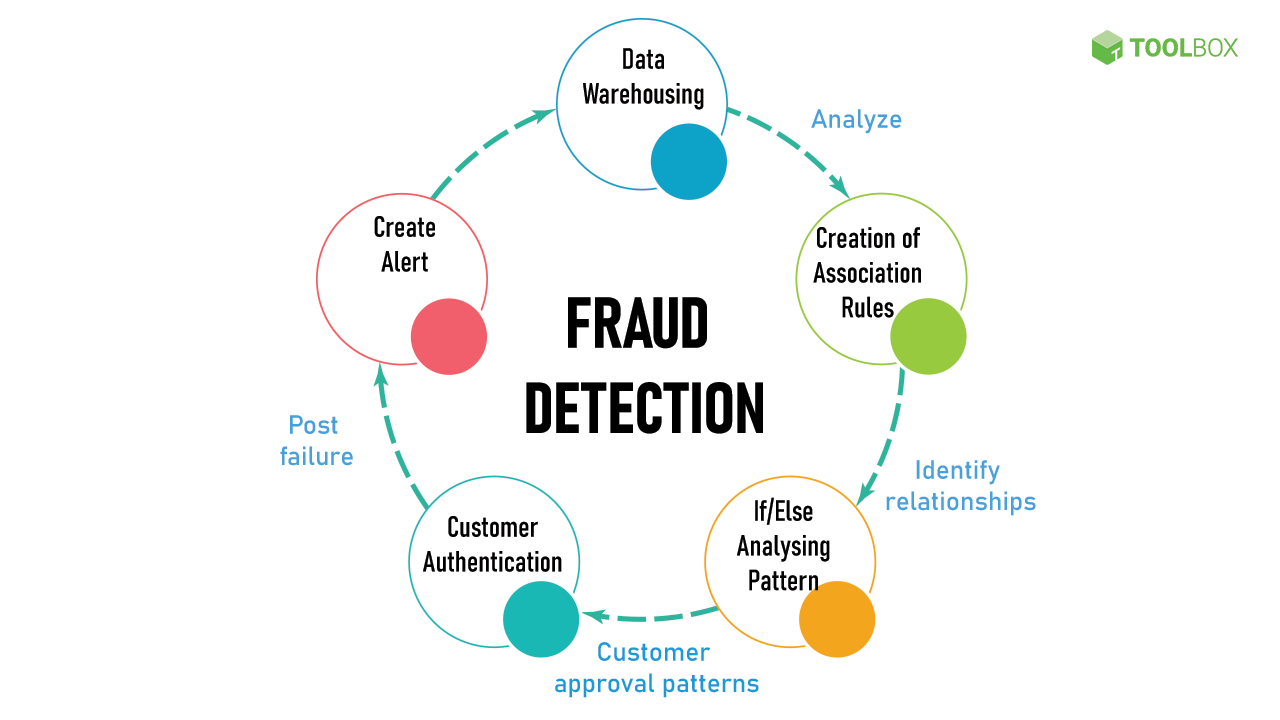Fraud Detection and Prevention
Fraud Detection and Prevention Definition
Banking and healthcare fraud account for tens of billions of dollars in losses annually, which results in compromised financial institutions, personal impact for bank clients, and higher premiums for patients. Fraud detection and prevention refers to the strategies undertaken to detect and prevent attempts to obtain money or property through deception.

FAQs
What is Fraud Detection and Prevention?
Fraudulent activities can encompass a wide range of cases, including money laundering, cybersecurity threats, tax evasion, fraudulent insurance claims, forged bank checks, identity theft, and terrorist financing, and is prevalent throughout the financial institutions, government, healthcare, public sector, and insurance sectors.
To combat this growing list of opportunities for fraudulent transactions, organizations are implementing modern fraud detection and prevention technologies and risk management strategies, which combine big data sources with real-time monitoring, and apply adaptive and predictive analytics techniques, such as Machine Learning, to create a risk of fraud score.
Detecting fraud with data analytics, fraud detection software and tools, and a fraud detection and prevention program enables organizations to predict conventional fraud tactics, cross-reference data through automation, manually and continually monitor transactions and crimes in real time, and decipher new and sophisticated schemes.
Fraud detection and prevention software is available in both proprietary and open source versions. Common features in fraud analytics software include: a dashboard, data import and export, data visualization, customer relationship management integration, calendar management, budgeting, scheduling, multi-user capabilities, password and access management, Application Programming Interfaces (API), two-factor authentication, billing, and customer database management.
Fraud Detection and Prevention Techniques
Fraud data analytics methodologies can be categorized as either statistical data analysis techniques or artificial intelligence (AI).
Statistical data analysis techniques include:
- Statistical parameter calculation, such as averages, quantiles, and performance metrics
- Regression analysis - estimates relationships between independent variables and a dependent variable
- Probability distributions and models
- Data matching - used to compare two sets of collected data, remove duplicate records, and identify links between sets
- Time-series analysis
AI techniques include:
- Data mining - data mining for fraud detection and prevention classifies and segments data groups in which millions of transactions can be performed to find patterns and detect fraud
- Neural networks - suspicious patterns are learned and used to detect further repeats
- Machine Learning - fraud analytics Machine Learning automatically identifies characteristics found in fraud
- Pattern recognition - detects patterns or clusters of suspicious behavior
The four most crucial steps in the fraud prevention and detection process include:
- Capture and unify all manner of data types from every channel and incorporate them into the analytical process.
- Continually monitor all transactions and employ behavioral analytics to facilitate real-time decisions.
- Incorporate analytics culture into every facet of the enterprise through data visualization.
- Employ layered security techniques.
Fraud Detection Using Big Data Analytics
Fraud detection and prevention analytics relies on data mining and Machine Learning, and is used in fraud analytics use cases such as payment fraud analytics, financial fraud analytics, and insurance fraud detection analytics. Data mining reveals meaningful patterns, turning raw, big datasets into valuable information. Machine Learning then submits that information to either Supervised or Unsupervised algorithms.
Supervised Machine Learning algorithms, such as logistic regression and time-series analysis, learn from historical data and identify patterns of interest that require further investigation. Unsupervised Machine Learning algorithms, such as cluster analysis and peer group analysis,
examines data without any identified fraud and reveals new anomalies and patterns of interest. Data analysts and scientists can then act on these anomalies.
Does HEAVY.AI Offer a Fraud Detection and Prevention Solution?
Mainstream analytics and fraud detection and prevention systems are programmed to flag unusual behavior, but when seconds matter, real time fraud detection analytics and Machine Learning is crucial in very quickly identifying and halting these fraudulent transactions.
HEAVY.AI accelerates existing fraud detection software and tools and fraud detection Machine Learning models, enabling these tools to analyze massive transaction datasets with millisecond results. With an immersive dashboard to cross-filter dozens of attributes, such as amount, merchant, location, and time, forensic and fraud analysts can use HEAVY.AI to take an ultra fine-grain look into potentially fraudulent transactions.
HEAVY.AI's data science platform enables data science analysts and researchers to visualize, analyze, and interact with massive datasets to gain new insights aimed at preventing fraud in the healthcare, telecom, federal, and finance industries.
